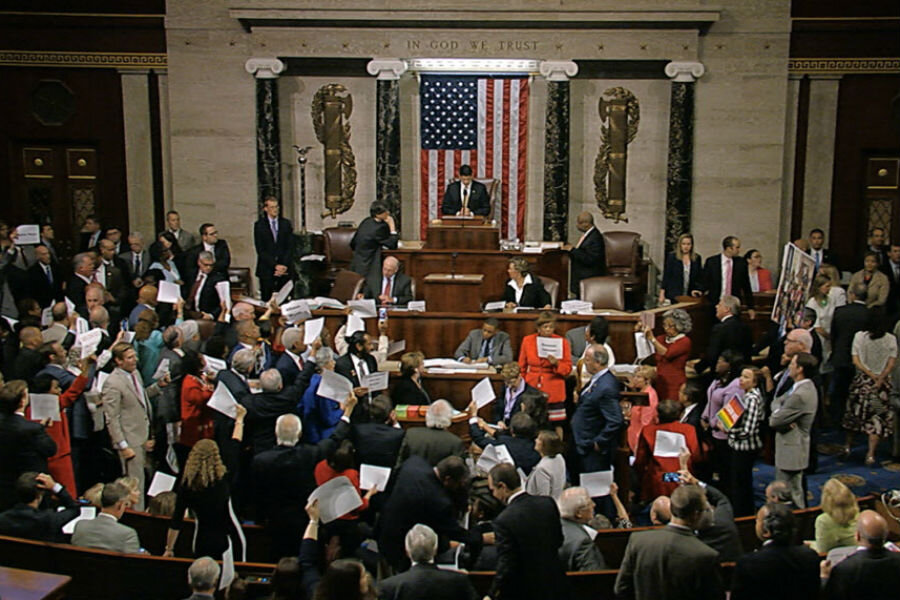Why Australia isn't a model for US gun control
If strict gun laws can stop mass shootings in Australia, why not in the US?
New research, published in the Journal of the American Medical Association (JAMA), found that there have been no mass shootings – "mass" defined as five or more victims, not including the perpetrator – in Australia in the two decades since the country enacted stricter gun control measures.
These measures were introduced in 1996, following a mass shooting in Tasmania that claimed the lives of 35 people and injured 23 more. Within 12 days, Australian lawmakers agreed to ban certain semi-automatic and pump-action weapons, and forced residents who already owned high-powered rifles to sell them back to the government.
In the years prior to the ban, between 1979 and 1996, there had been 13 mass shootings, researchers noted.
The publication of this research comes at a time when federal lawmakers in America are struggling to agree upon a legislative response to a massacre at an Orlando nightclub that left 50 people dead and many others injured.
Australia often comes up as a model, especially in the wake of mass shootings. In October, after a shooting at a college in Roseburg, Ore., President Barack Obama cited Australia's gun laws in a statement; that same month, Hillary Clinton said a similar federal buyback program "would be worth considering."
The experience in Australia "provides a useful example of how a nation can come together to forge life-saving policies despite political and cultural divides," writes Daniel Webster, a researcher specializing in gun violence at Johns Hopkins University's Bloomberg School of Public Health, for JAMA.
Yet, he says, "political, cultural, and legal challenges make it highly unlikely that the United States would implement comparable policies."
Politicians and activists from both ends of the political spectrum have grappled for years with how to reduce gun violence, particularly mass shootings, but the national discussion is complicated by Americans' constitutional right to bear arms. That makes gun ownership in the US an issue of civil rights, not merely public safety, as it is in countries such as Australia, which has no Second Amendment equivalent.
The sheer number of firearms in America today – an estimated 300 million – would also present practical and financial obstacles. If the US were to collect and destroy the same proportion of firearms as Australia did, it would require a buyback of 90 million weapons, according to one Australian researcher, as compared to only 640,000 firearms bought back by the Australian government. Paying full market value for the guns could cost the US billions of dollars.
Furthermore, some experts say the ideology of gun ownership is too deeply ingrained in American history and culture for such dramatic measures to succeed.
"This is a country that exists because the people were able to carry out successfully an armed revolution against what they considered to be a dictatorial government," said David Kopel, associate policy analyst for the Cato Institute, in a phone interview with The Christian Science Monitor. "There wouldn’t be a United States if there had not been an armed American people."
The high rates of gun ownership among Americans reflect the idea that, dating back to the early days of Pilgrims settlement, the US "has always been a country that attracts people who aim for self-reliance and are willing to take individual responsibility," Mr. Kopel says. "And that kind of individualistic ethos of taking responsibility for your family and their future fits well with the ideology of gun ownership, in terms of lawful self-protection."
The unique fondness for firearms in the United States is not only the result of history and American ideals. Many Americans own and carry guns as a response to what they perceive as very real, contemporary threats, says sociologist Jennifer Carlson in an interview with the University of Toronto News.
For example, in Dr. Carlson's research on gun-carrying citizens in Michigan, a state she describes as having "a failing economy, informal but austere forms of racial segregation, and infamous violent crime rates," she found that "social insecurities and suspicions surrounding state efficacy," particularly the police, cause gun carriers to view their weapons as both "a means of both self-protection as well as the protection of moral order more broadly."
Many gun-owning Americans may view a government confiscation of weapons as infringing on that right to protect and police themselves, making it unlikely that the guns would be peacefully handed over without a fight if such a buyback policy were to be implemented, Kopel says.
"I think it’s unrealistic to imagine that the response in the US would be the same [as in Australia]," he said, adding, "The last time somebody tried mass gun confiscation here was on April 19, 1775, at Lexington and Concord."






